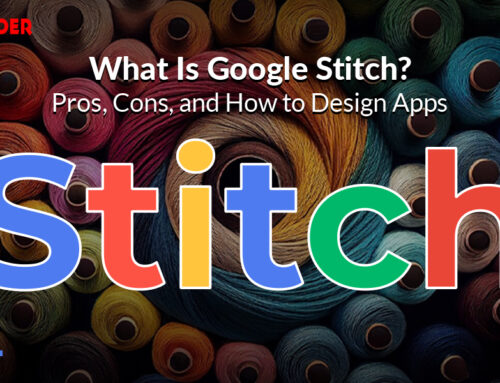Google’s Gemini and ChatGPT can enhance your productivity and simplify various parts of your life for personal or work-related matters.
However, which one should you choose?
We directly compared the two AI applications to determine which is superior.
Keep reading to know which AI, Gemini or ChatGPT, is more suitable for:
- All kinds of research
- Understanding complex concepts
- Image generation
- SEO task
- Creative content
And much more.
Why are Google Gemini and ChatGPT Important?
Large language models (LLMs) such as CHatGPT and Google Gemini are transforming business operations in various sectors, including digital marketing, finance, and legal services.
And at this rate, it’s not possible to keep up.
Since ChatGPT was released in November 2022, LLMs have:
- Our productivity and efficiency have improved. Many tasks can be executed much faster, and we have better access to information.
- Enhance our creativity by allowing us to instantly generate narratives, scripts, artwork, videos, and various other forms of creative content.
- Effected our economy through both unemployment and employment opportunities as companies adjust to the possibilities presented by these new technologies.
OpenAI’s ChatGPT stands at the core of the LLM revolution.
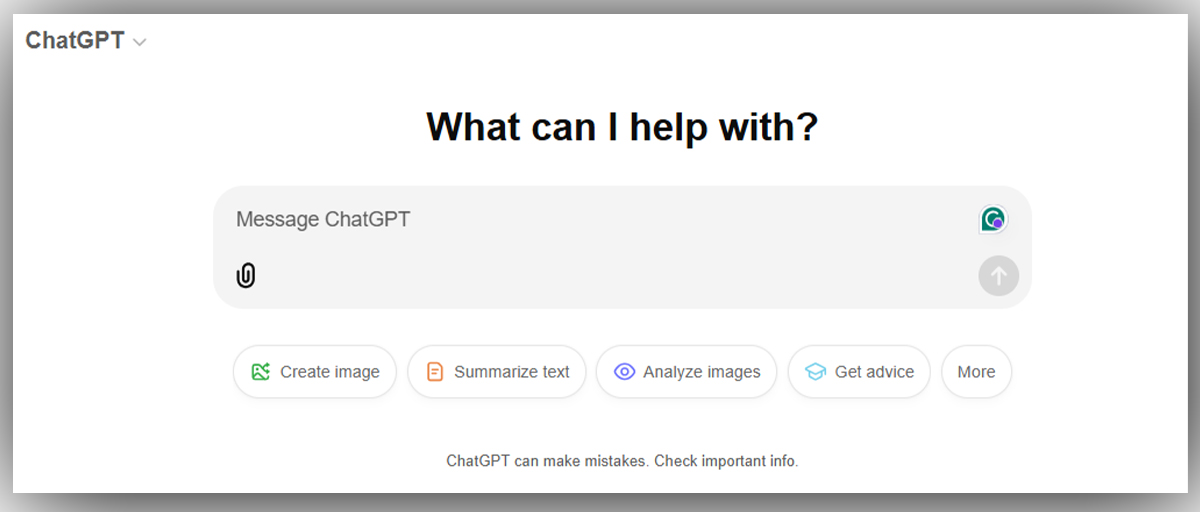
As we know Google Gemini, Google rebranded Bard as Gemini in February 2024

Like ChatGPT, Google Gemini is an AI-powered chatbot offering comparable functionalities and capabilities.
But the real question is, which is the right choice for you?
It all depends on your specific needs. Let’s start by exploring the key differences between the two.
How do Gemini and ChatGPT differ?
ChatGpt is a text-based AI ChatBot as if you were messaging a friend.
Like many messaging platforms, it has a talk-to-talk interface if you prefer to speak your questions instead of typing them.
Google Gemini, on the other hand, aims to differentiate itself by introducing multi-modal capabilities.
Alternatively, you can text it.
However, Google Gemini Live lets you interact with the app using real-time voice conversations, such as talking to humans.
But let me tell you, it’s amazing.
—Comparing Google Gemini vs ChatGPT Features
The free versions of ChatGpt & Google Gemini are quite similar. Here’s what is included in their free plans:
| Feature | Gemini 2.0 | ChatGPT |
| Multimodal AI | Supports text, image, audio, & video generation | Primarily text-focused with image features |
| Integration | Seamlessly integrated Google’s ecosystem | Flexible API for third-party use |
| Performance | Set new benchmarks in AI capabilities | Consistent & reliable text performance |
| Customization | Limited to Google tools & services | Customizable through APIs & plugins |
| Accessibility | Works with Google products like Search & workspace | Accessible via web, app, & API integration |
Which is Better: Google Gemini or ChatGPT?
Generally, ChatGPT is better than Google Gemini if you’re looking for text-based tasks and research.
Google Gemini is better if you need creative tasks and image generation.
Our conclusions are based on comparing Google Gemini and ChatGpt across their most everyday use cases.
“To find the best for your needs, you must experiment with both independently. As both tools constantly evolve, our experiments offer a snapshot of their performance for various tasks.”
Gemini is Better for Research
Gemini is a very talkative assistant, eager to gather research and simplify your life.
Does it automatically cite its sources along the way?
Not quite, but when you ask, it certainly will.
Additionally, you can tap the Google icon next to any reply to find out more or verify Gemini’s answer. It will also provide related search queries for a specific subject, which can be useful when conducting research at any level.

ChatGPT can also crawl the web and cite its sources. However, sometimes it does this automatically, and most of the time, you have to prompt it. In my experience, ChatGPT has been providing sources that are not valid.
ChatGPT offers a more reliable and advanced voice mode
Both AI chatbots enable you to have conversations with them through voice. In Gemini, this function is more akin to voice-to-text: you talk and press send, Gemini converts your speech into text, it replies in text, and you press play to heat Gemini’s replies.
ChatGPT, however, lets you verbally communicate back and forth with it. Additionally, there are manual options to stop, restart, and leave the discussion.
Also Read: Voice Search SEO Optimization: Rank Higher in the Age of Voice Assistants
If you opt for the advanced multimodal GPT-4o, ChatGPT replies within an average of 0.32 seconds, creating the illusion of a genuine conversation.
The vocal tones are also notably more natural, and you can select from various voices.
Most ChatGPT Plus and team users also have access to advanced voice chats (powered by GPT-4o), which lets you interrupt ChatGPT without clicking; soon enough, you can share a live feed of something and chat about it.
For some terrifying examples of what this looks like, check OpenAI’s demo.
On the other hand, Google recently unveiled a demonstration of Google Astra, which offers features comparable to those of Real-Time Voice Mode. However, they have not announced any intentions to make it available to the public soon.
Both Apps Are Excellent at Simplifying Complex Concepts
Gemini and ChatGPT instantly help you understand complex concepts on any topic or subject.
Such as:
- Science & tech
- Engineering
- History
- Art forms
- Finance
For example, we prompt both AIs to help us understand the climate system feedback loops.
Both generated highly readable content that made the topic easy to understand.
But, Google Gemini excelled overall in simplifying and explaining complex concepts.
Its crystal-clear answer and skimmable formatting made it a breeze to digest the information.

ChatGPT is also excellent at this kind of task.
It took a different approach, offering an analogy to help us understand the concept:
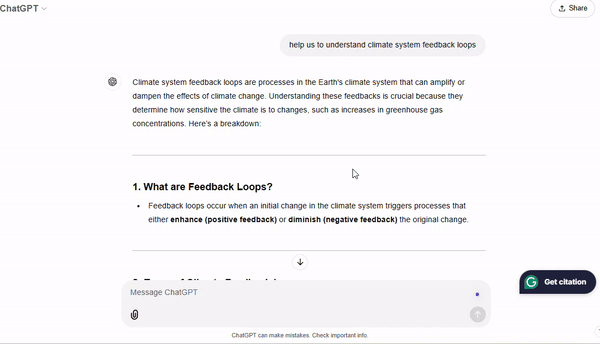
So, both apps are excellent for breaking down complex topics into simpler concepts. You can optimize the results that suit your learning style by customizing your prompts.
For example, if you enjoy learning through analogies, you can specify that in your prompt. Alternatively, you can use the “explain like I’m five” approach (ELI5) for further simplification.
Google Gemini Generates Better Images
When it comes to image generation, Google Gemini takes the lead with its superior capabilities and innovative approach, making it a game-changer for social media marketing and creative projects.
Whether you’re crafting visually stunning artwork, designing compelling ad creatives, or curating content that stands out on Instagram or LinkedIn, Gemini consistently delivers results that feel both human-inspired and technically refined.
For example, we gave three different prompts to Gemini, and this is how it came out:
We prompted an image of a mythical forest with glowing mushrooms, cascading waterfalls, and a starry sky peeking through the canopy. Gemini doesn’t just provide a generic forest—it incorporates intricate textures, lighting effects, and a magical ambience that brings the scene to life.
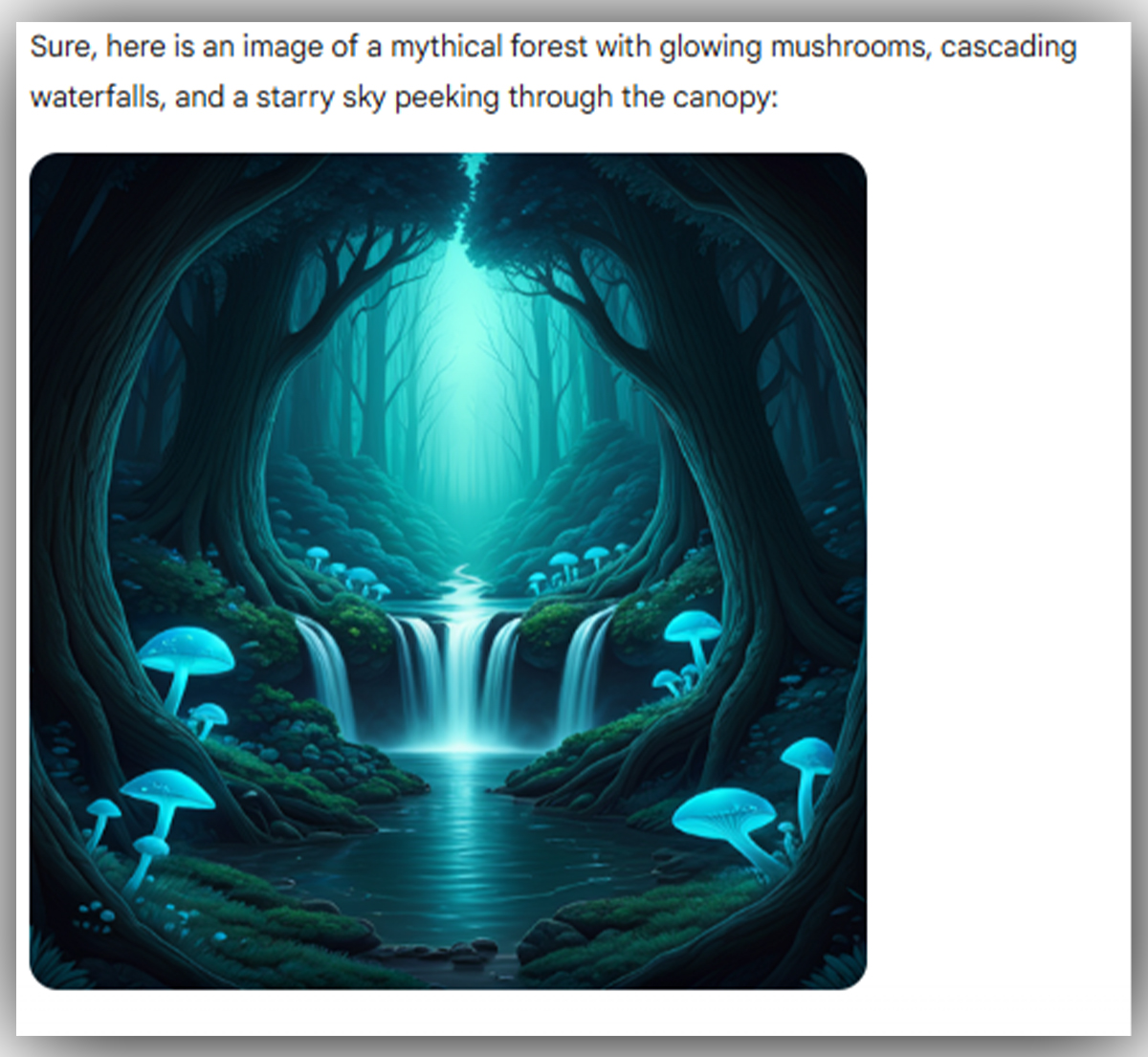
Need a professional-looking product display? Ask Gemini for a sleek coffee cup design, and it produces a photorealistic image complete with perfect reflections, shadows, and even customizable branding elements.
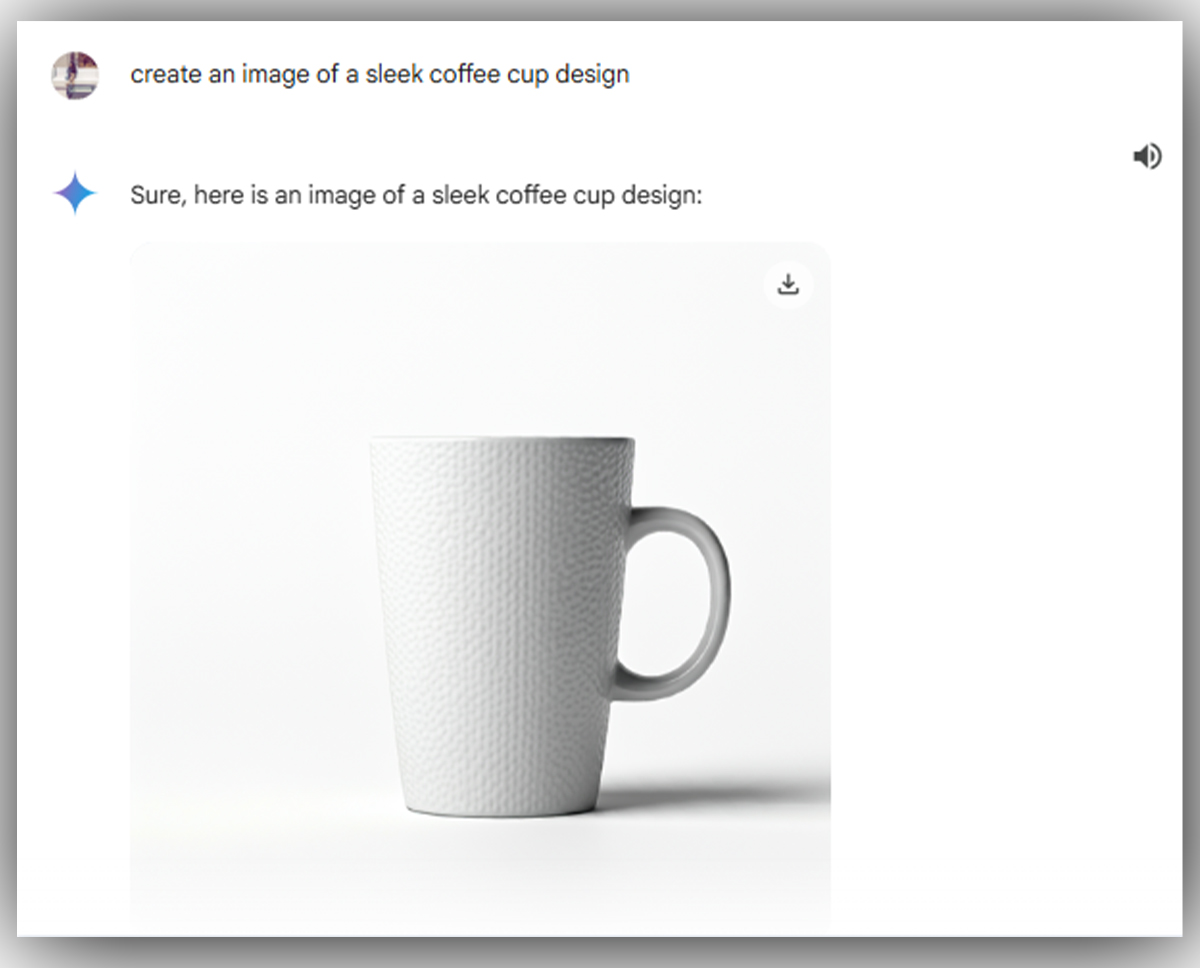
Over here what we did, we asked to customize the image according to our requirement, and yet Gemini followed that accordingly:
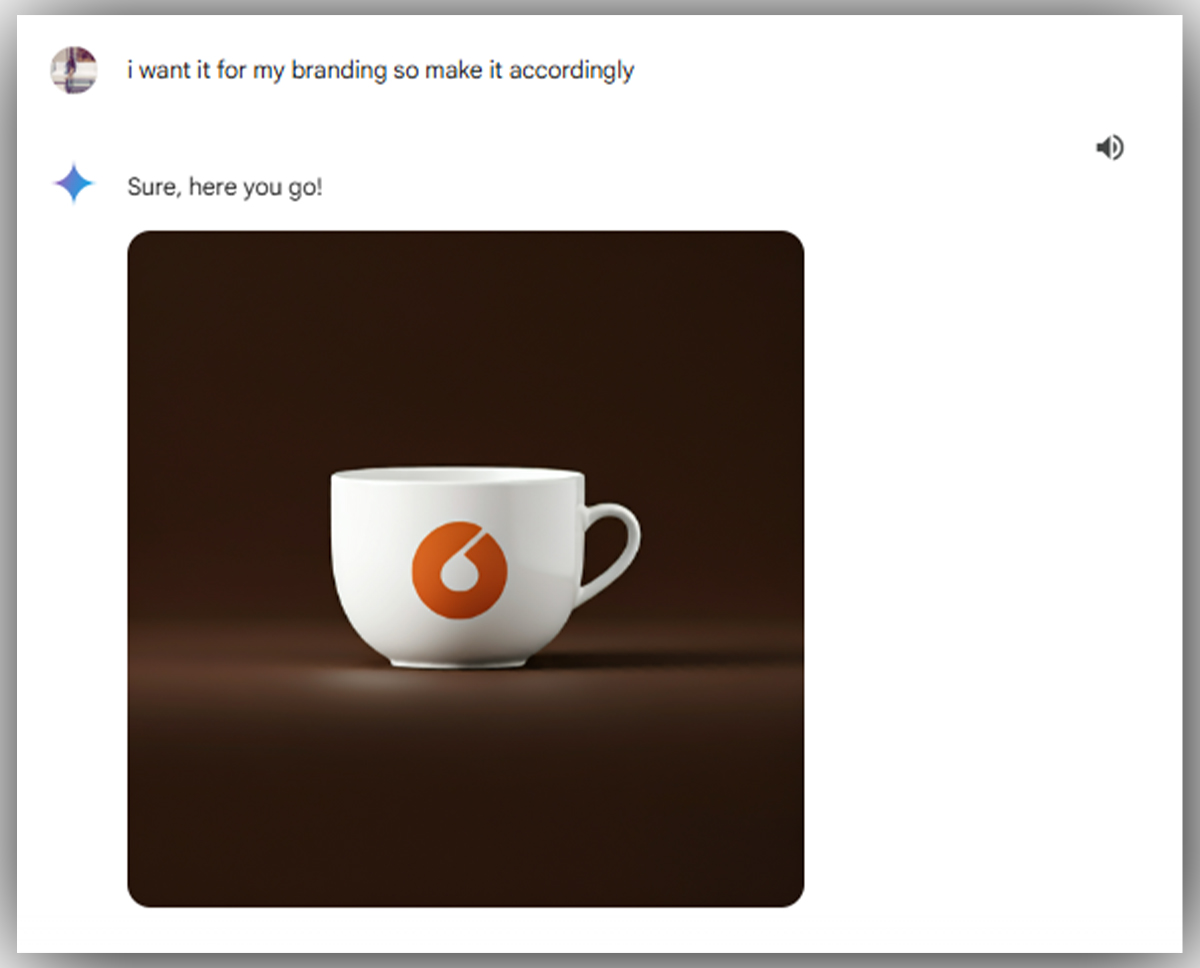
Are you curious about how ancient Rome might have looked at its peak? Gemini can recreate a vivid depiction of the Colosseum bustling with activity down to the market stalls.
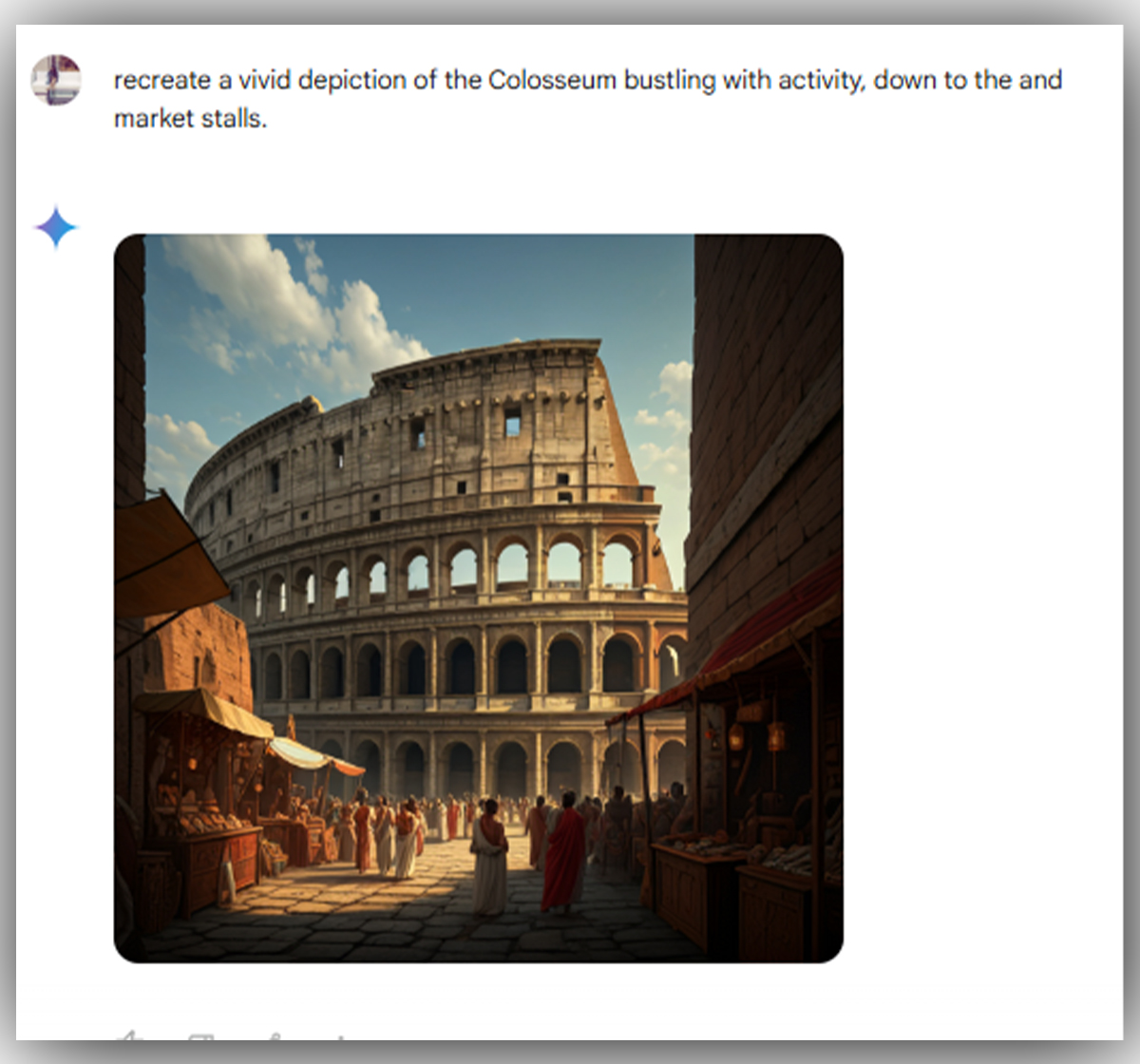
We prefer Google Gemini for image generation because:
- It offers precise text placement within images
- Image generation is available on the free plan.
ChatGPT Is the Better Option for SEO
Many SEO experts use ChatGPT and Google Gemini to assist with daily tasks.
These can help you:
- Brainstorm keyword and topic ideas
- Write meta descriptions
- Optimize title and headlines
- Create title tags
- Generate alt text
- Provide backlink idea
- Write backlink outreach emails
—Keyword Research
We requested both apps to generate keyword suggestions on the topic “How SEO tools can help business?”
ChatGPT provided suggestions that were all highly relevant to the topic.
However, Google Gemini missed the mark, generating off-topic keywords about 40% of the time:

Neither app delivers real-time results and comprehensive data that professional SEO tools like SemRush provide.
But they still serve as valuable starting points for your keyword research.
Overall, we favour ChatGPT for generating keyword ideas. Its knack for delivering highly relevant keywords makes it a clear winner in this category.
—Meta Description
Google Gemini’s writing is more compelling, concise, and engaging—perfect for crafting impactful meta descriptions.

ChatGPT produces quality writing but often fails to attract readers and encourage engagement.
— Readability and User Engagement
We asked both AIs to write an introductory paragraph for a blog on “The benefits of Remote Work”
ChatGPT response was well structured, engaging, and conversational:
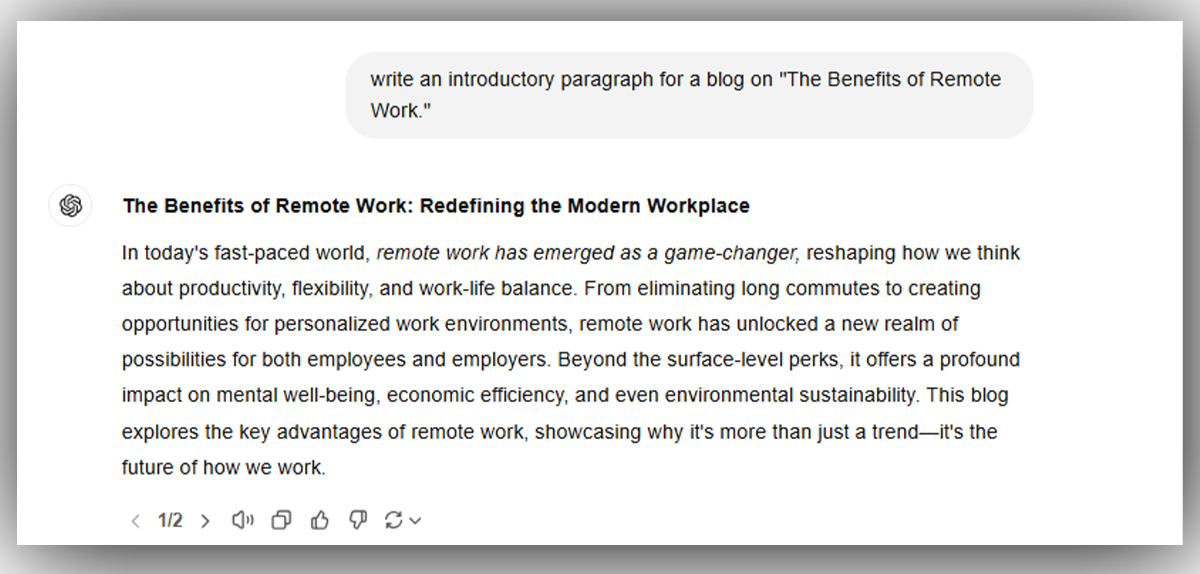
The content includes strong hooks, clear context, and a natural flow to keep readers interested.
On the other hand, Gemini’s result was accurate but lack of flair:
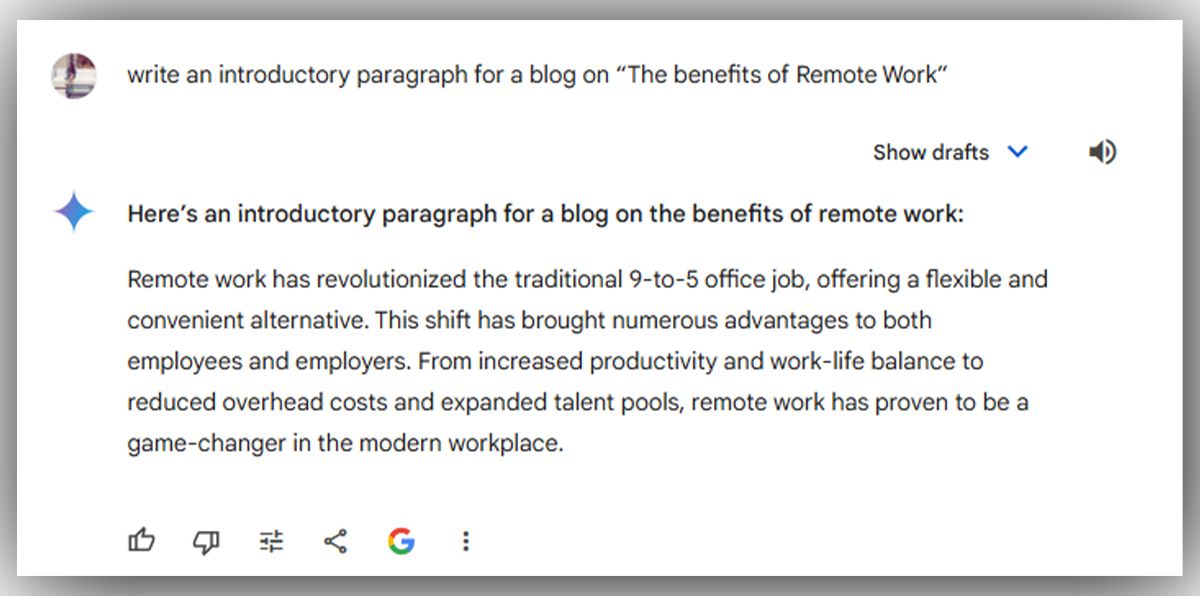
Though informative but it was too plain and required extensive editing to match the tone of modern blogs.
— Optimizing Headlines
We asked ChatGPT and Google Gemini about the same blog topic: “The benefits of remote work.”
The goal was to see how each AI generated SEO-optimized, engaging headlines.
ChatGPT response:
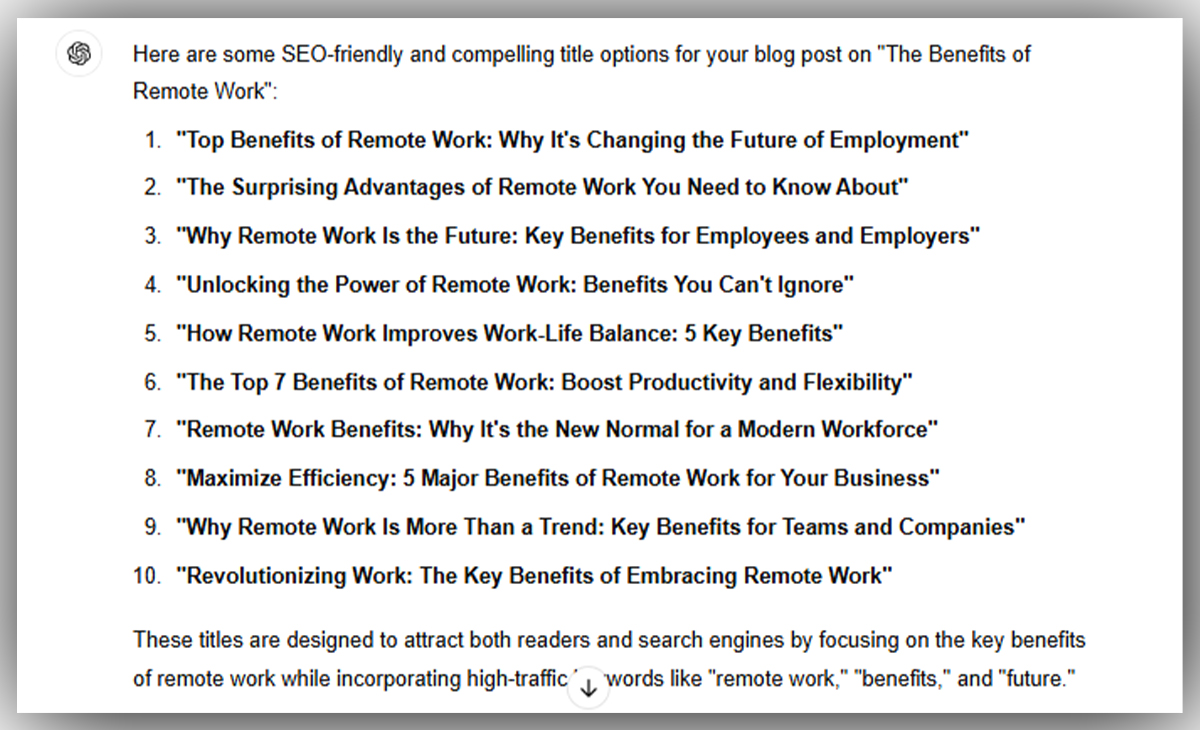
ChatGPT’s headlines include specific numbers, actionable terms, and power words like “Unlocking,” “Maximize,” and “Top benefits”. These elements are strategically designed to grab the reader’s attention.
Google Gemini response:
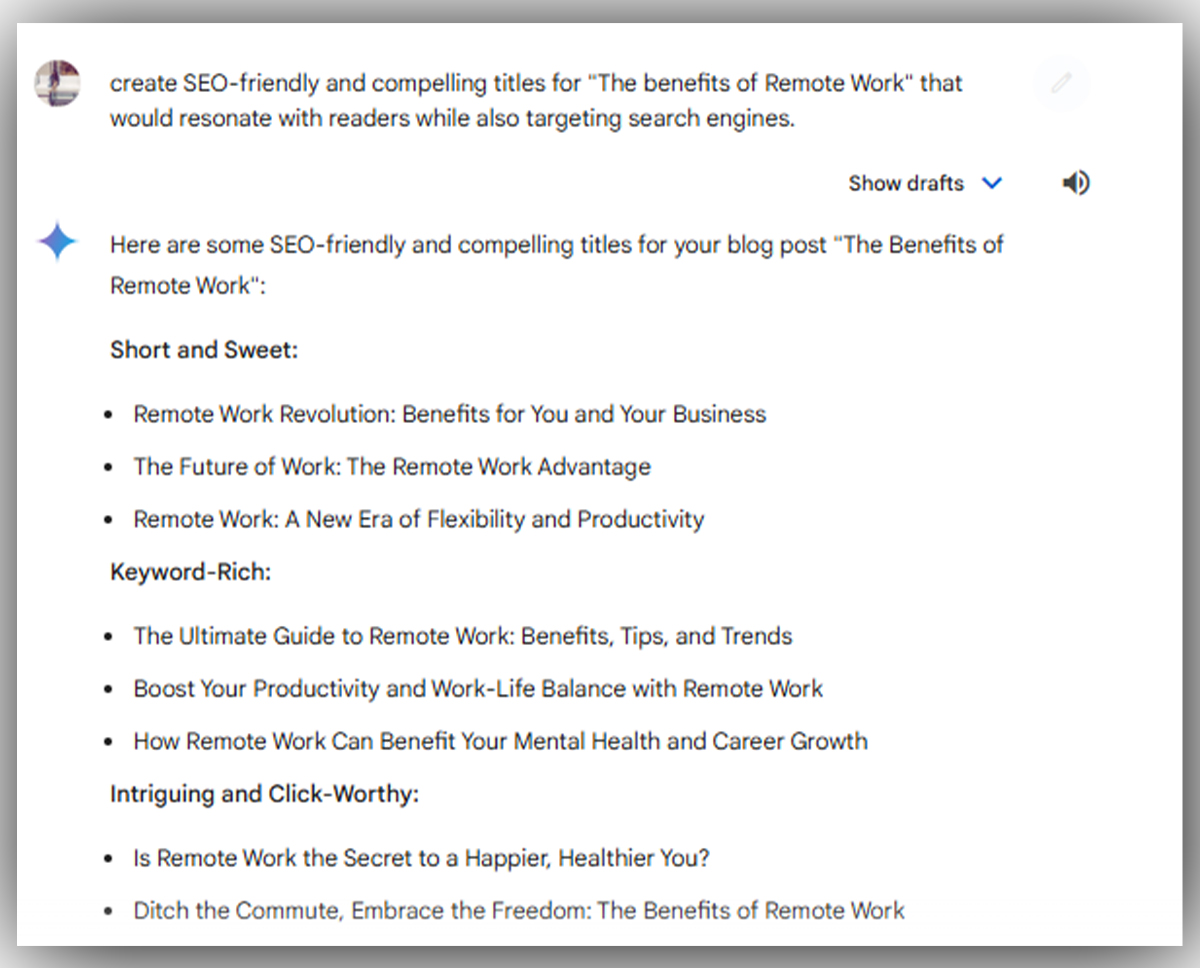
Despite Gemini’s accurate and clear headlines, ChatGPT’s used emotional hooks and actionable language more effectively.
— Alt Text
Google Gemini produced more readable alt text compared to ChatGPT.
However, to be honest:
Both apps were overly detailed and a bit too wordy.
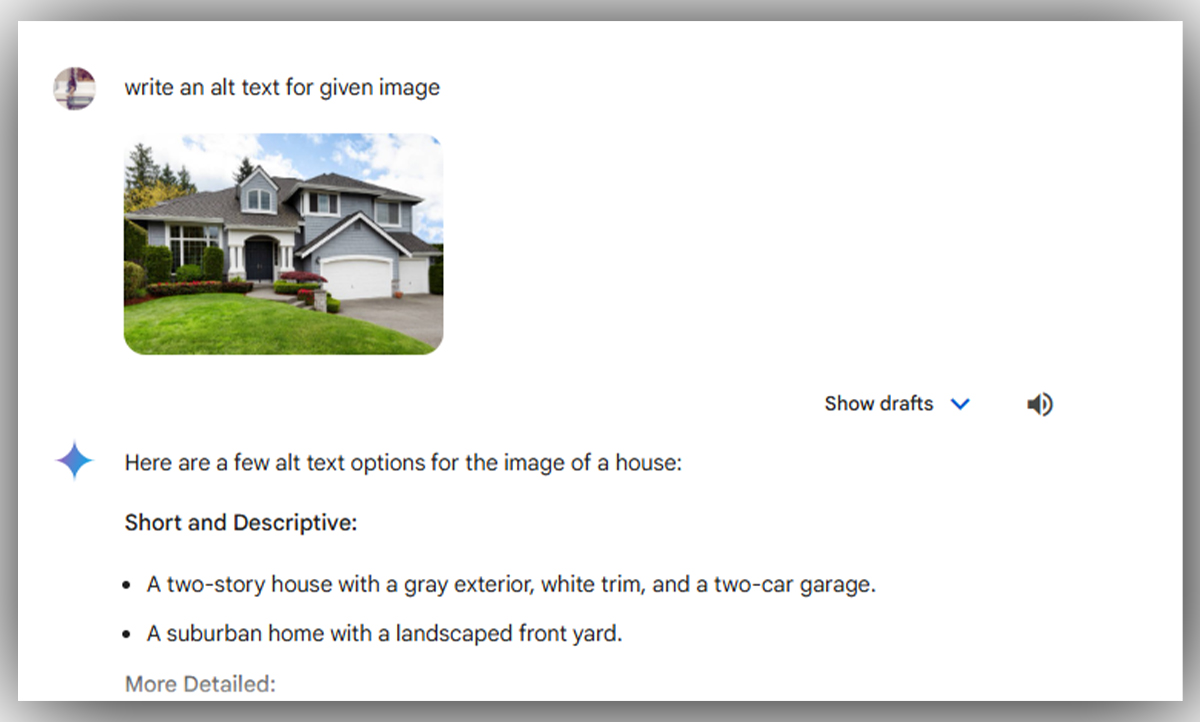
Refining prompts with character limits can be helpful, but both apps tend to overlook these suggestions.
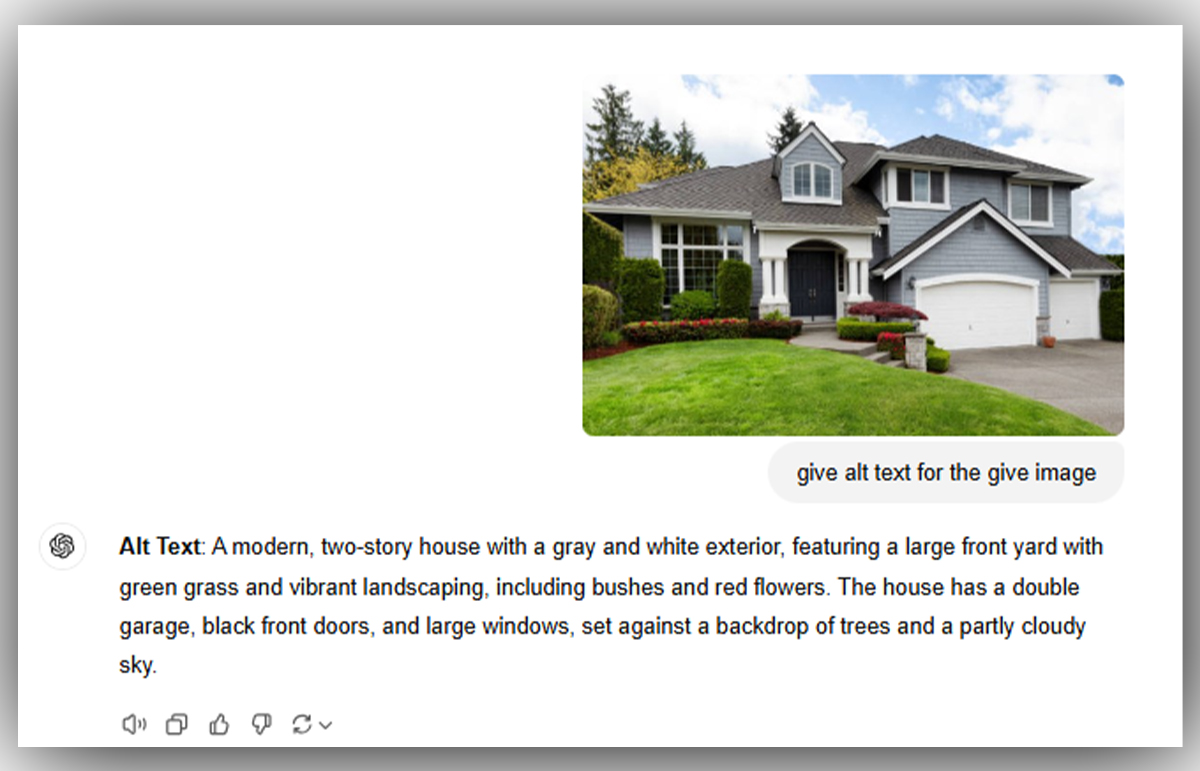
Therefore, we recommend experimenting with the prompts and using your expertise to create effective alt text.
— Backlink Outreach Ideas
Both apps provided excellent suggestions for potential connections to help build backlinks to our article. ChatGPT, however, offered a broader range of ideas and opportunities.

Google Gemini also provided some valuable suggestions.
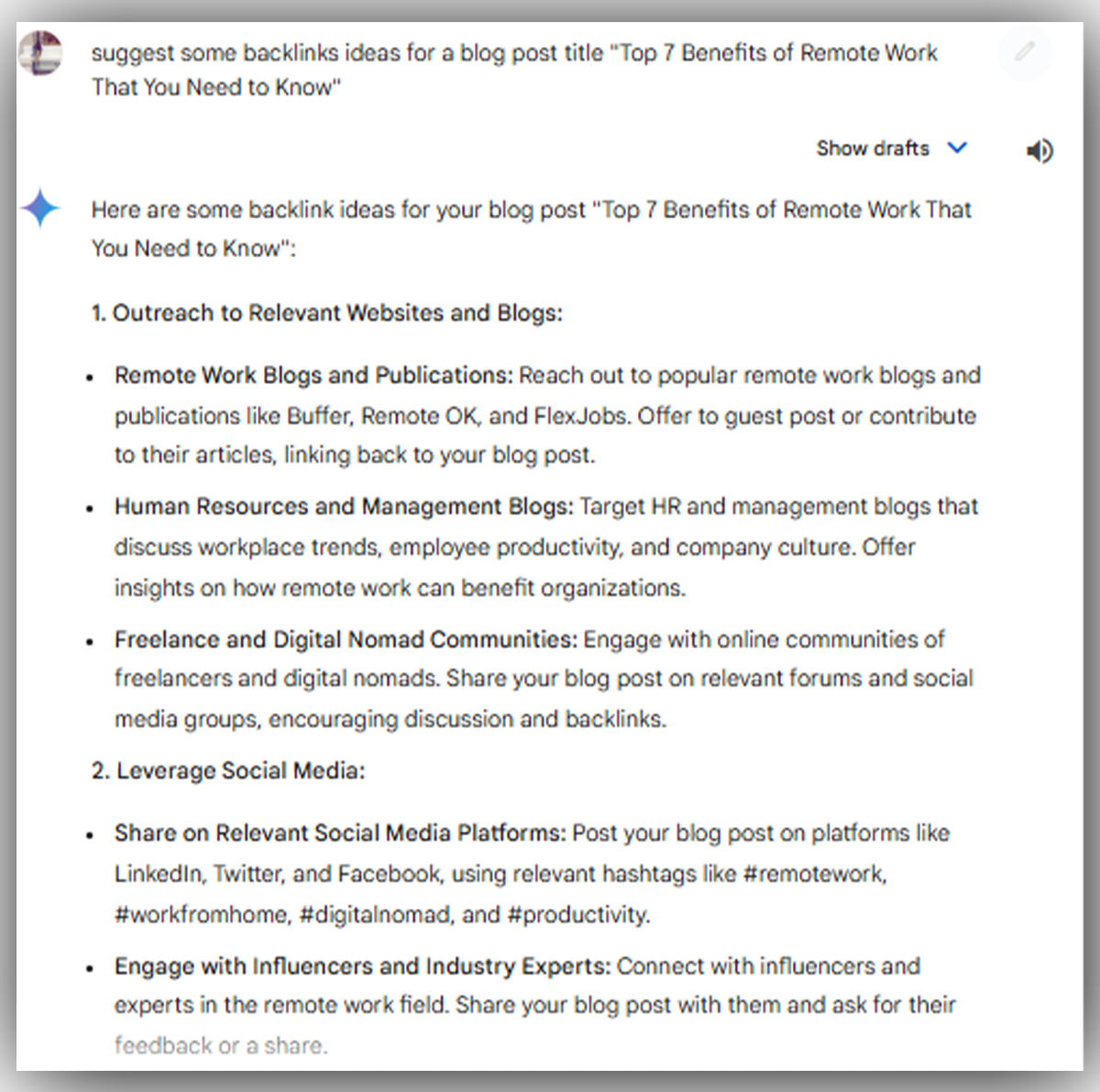
However, for beginners, ChatGPT’s detailed explanations and guidance made its response more useful.
Google Gemini Is More Useful for Creative Content & Planning
Google Gemini and ChatGPT both excel in creating creative content. Here’s what they can do:
- Suggest blog topics, article ideas, and outlines
- Plan email and social media campaigns
- Create video scripts
- Write sales copy for websites and landing pages
- Draft email campaigns
- Craft social media captions
To compare their capabilities, we asked both tools to generate a blog post outline for an article on “The benefits of Remote Work.”
ChatGPT delivered a more detailed outline.
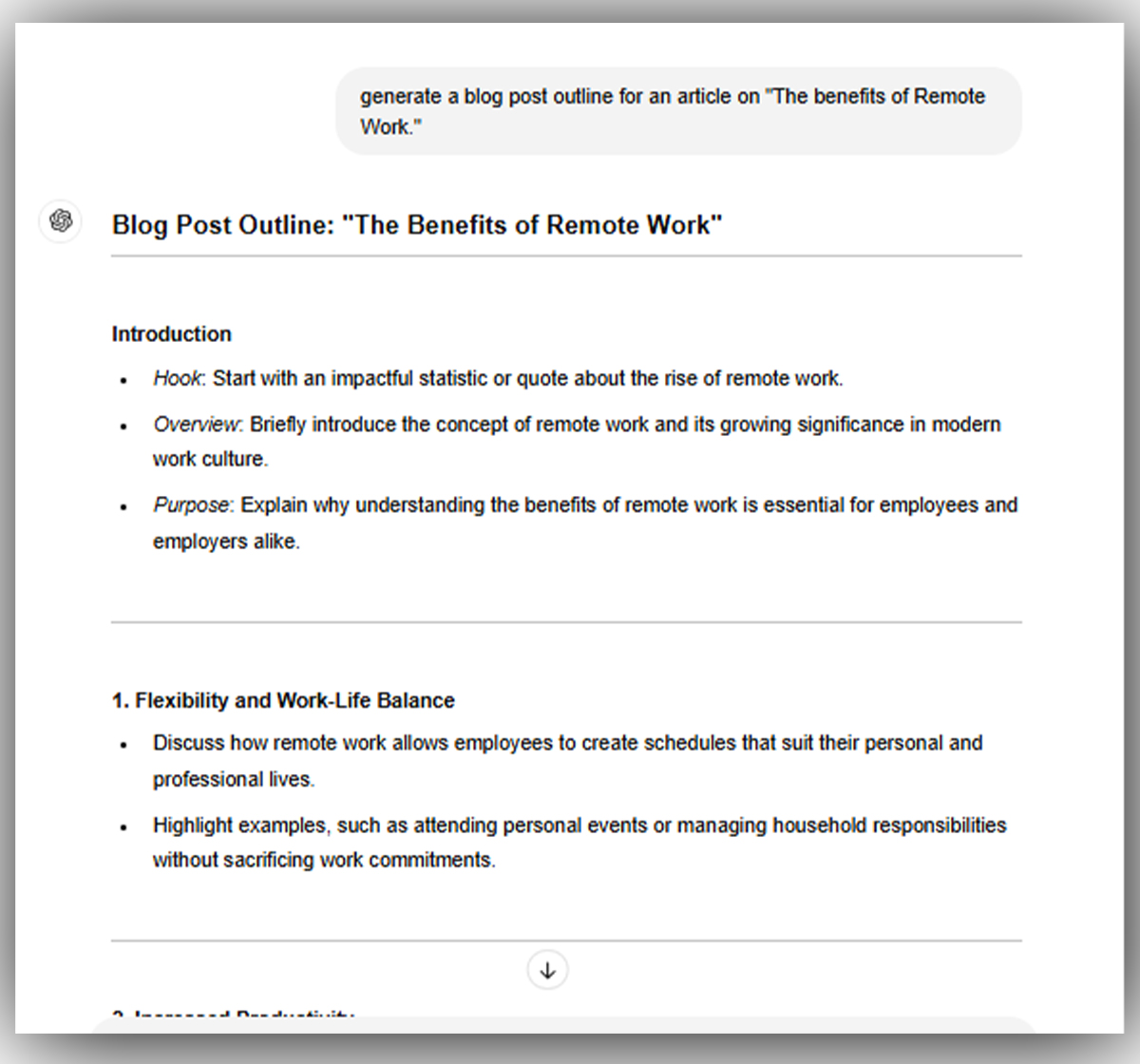
We tasked both apps with creating promotional content for the article, and here’s how they performed:
- ChatGPT delivered detailed emails, while Google Gemini excelled in writing quality.
- ChatGPT’s video script included voice-narrated and text-based CTAs, whereas Gemini excluded CTAs entirely.
- Google Gemini was impressed with campaign ideas that outlined goals, engagement strategies, and diverse formatting options. Meanwhile, ChatGPT provided a full month of content ideas but skipped goals and strategy.
- Gemini’s natural and engaging writing style produced standout captions, most of which were ready for publication without edits. In contrast, ChatGPT struggled to deliver compelling and distinctive content.
- Gemini’s sales-oriented copy was more benefits-driven and persuasive than ChatGPT’s results.
Overall, Google Gemini shines in creative text generation. However, if you need assistance with outlining or crafting video scripts, ChatGPT is a solid choice.
Both Are Good at Reasoning and Decision-Making
Are you struggling with a tough decision? Google Gemini and ChatGPT can help you explore both sides of the issue and provide a detailed list of factors to weigh before choosing.
For instance, we asked both tools for advice on expanding our blog content into podcasting.
Google Gemini offered a broad strategy, serving as a solid starting point. Its guidance included a structured thought process and a clear list of considerations, neatly organized into topics and subtopics.
For example, the Investment and Resources section highlighted key factors such as equipment, time commitment, and hosting expenses.
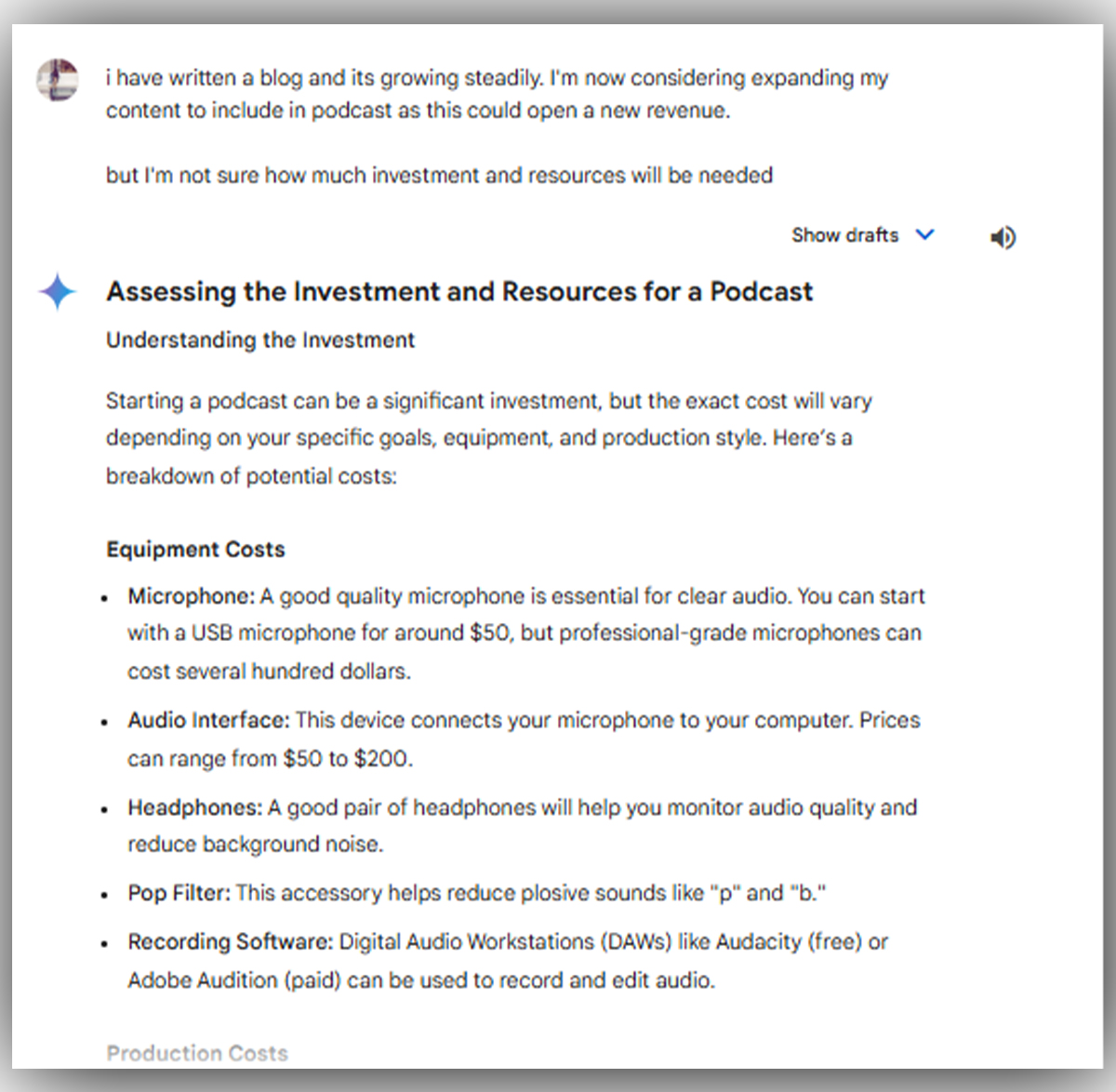
ChatGPT’s response lacked comprehensive descriptions but highlighted often-overlooked details, such as soundproofing, audio software, and podcast storage fees.
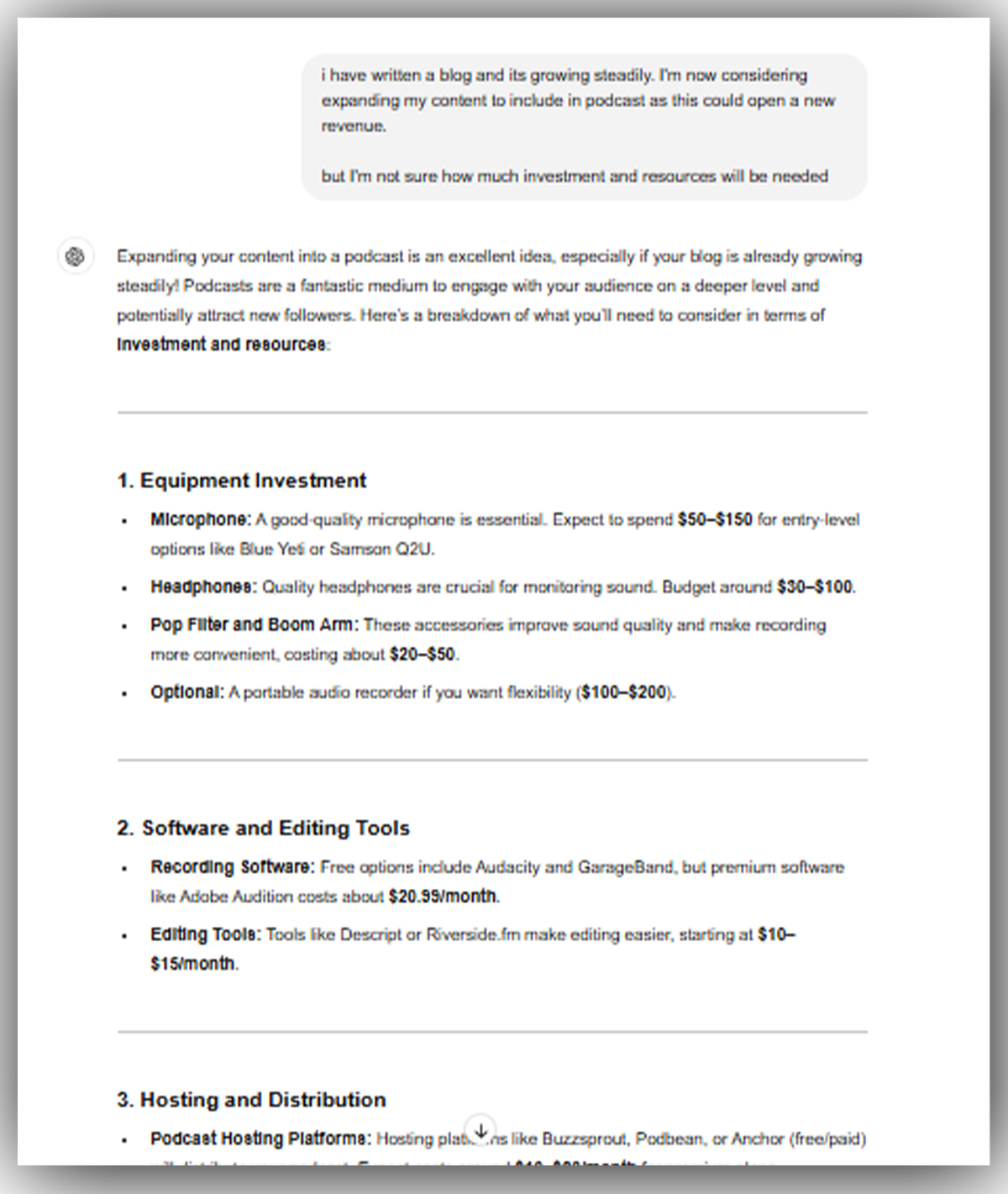
Neither app offered sufficient detail for a well-informed decision.
However, that’s perfectly fine.
Together, their responses offer a solid foundation for guiding our research.
We suggest using both apps when seeking AI assistance for reasoning and decision-making, as they provide a broader range of perspectives.
Conclusion: Choosing Between Google Gemini and ChatGPT
Our experiment comparing Google Gemini and ChatGPT reveals that each platform has its own set of strengths and limitations.
In general:
- Google Gemini shines when it comes to creative writing.
- ChatGPT is a superior “thinker,” ideal for analytical tasks and strategic planning.
Are you curious about how AI chatbots can improve your workflow? Contact Digital Guider to explore more!

